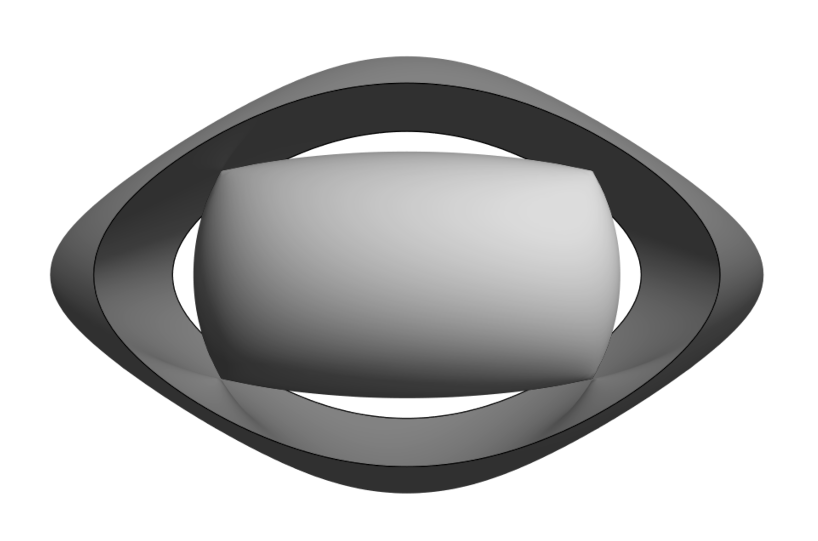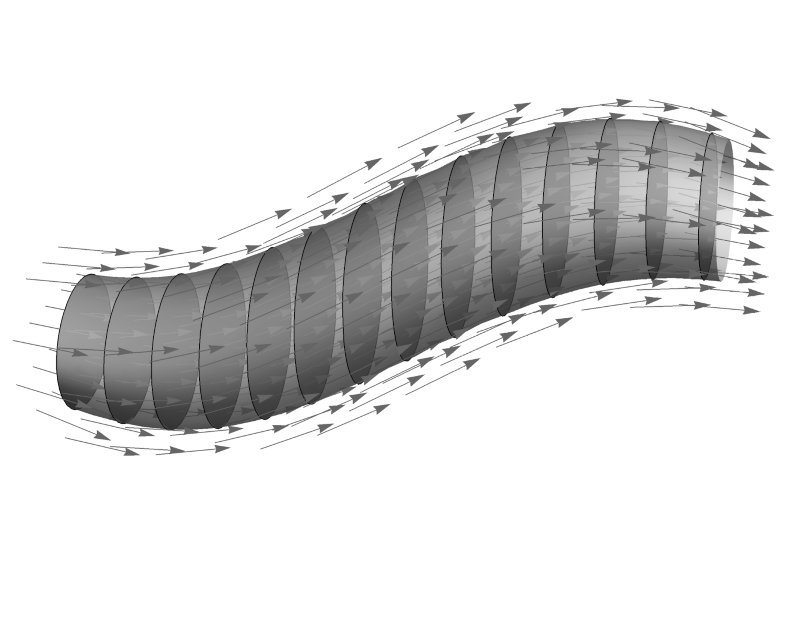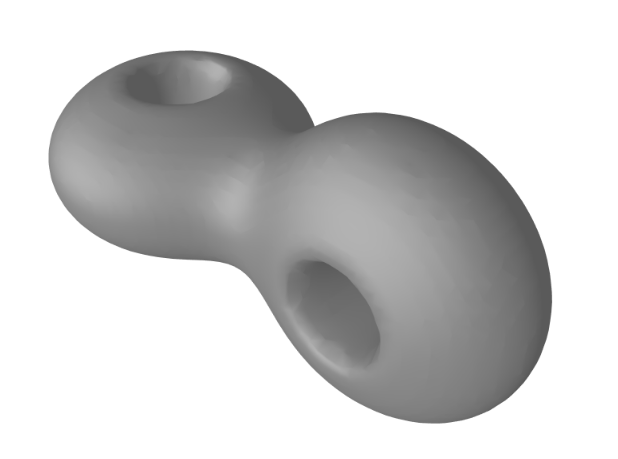
Singular geometrical optics for wave propagation on manifolds
This project is inspired by the phenomenon of conical refraction discovered by Hamilton in the 1830’s, in which a single ray of light refracts into a cone upon entering a bi-axial crystal. I am interested in studying similar phenomena for more general equations of physical interest; like those of elasticity theory. My approach to this problem is based on the use of topological methods to predict the existence of singularities in the Fresnel Hyper-surface associated to hyperbolic partial differential equations.
Effective diffusion on complex geometries
I am interested in the study diffusion processes taking place inside complex geometrical objects. More specifically, I study of diffusion processes on thin channels (e.g. capillary veins, nano tubes, etc) using tools from differential geometry and topology. For channel-like object the multi-dimensional diffusion equation can be “reduced” to a diffusion equation in a 1-dimensional spatial variable. The diffusion coefficient for this reduced equation is known as the effective diffusion coefficient. My current goal is in find an analytic formula for this coefficient for channels in 3-dimensional space with cross sections of arbitrary shape.


Blending Surfaces and Neural Networks
I am trying to understand diverse geometrical aspects of neural networks by applying ideas used in computer graphics to construct geometrical objects. I use a technique to smoothly blend regions in space (using smooth set operations like intersections, unions and differences) to motivate the use of higher order neural networks (e.g. quadratic and sigma-pi neural networks).
Published Articles
- (2021) Carlos Valero-Valdés. Singular Geometrical Optics for Differential Operators on Surfaces. Journal of Mathematical Physics, Volume 62, Issue 2, 2021. DOI: 10.1063/5.0028955
- (2021) C. Valero. A Coordinate Free Formulation of Effective Diffusion on Channels. Preprint.
- (2020) H. Esqueda, R. Herrera, S. Botello and C. Valero, Solving anisotropic Poisson problems via discrete exterior calculus, Rev. int. métodos numér. cálc. diseño ing. (2020). Vol. 36, (2), 32, https://www.scipedia.com/public/Esqueda_et_al_2020a
- (2016) C. Valero. Maxwell’s Equations, The Euler Index and Morse Theory. Mathematical Notes, Springer, Volume 100, Issue 3, pp 352–362 (Versión en Ruso: Mat. Zametki, Pages 331–343). DOI:10.1134/S0001434616090029
- (2016) C. Valero. Effective diffusion on the interface between two surfaces. Physical Review E 94, 022121. DOI : 10.1103/PhysRevE.94.022121
- (2015) C. Valero. Effective diffusion on Riemannian fiber bundles. Journal of Mathematical Physics 56, 023507. DOI : 10.1063/1.4907984
- (2014) C. Valero & R. Herrera. A Fick-Jacobs equation for channels over 3D curves. Physical Review E 90, 052141. DOI: 10.1103/PhysRevE.90.052141
- (2014) C. Valero & R. Herrera. Projecting diffusion along the normal bundle of a plane curve. Journal of Mathematical Physics 55, 053509. DOI: 10.1063/1.4875106
- (2013) C. Valero. Efficient Surface Triangulation using the Gauss Map. International Journal of Computer Mathematics. Vol. 90, Issue 13,. DOI: 10.1080/00207160.2013.764993
- (2009) C. Valero. Morse Theory for the Eigenvalue Functions of Symmetric Tensors. Journal of Topology and Analysis, Vol.1, No. 4, 417-429. DOI: 10.1142/S1793525309000199
- (2001) R. Muciño and C. Valero. Geometry and Dynamics of the Residue Theorem. Morfismos. 5, 1
- (1995) R. Muciño and C. Valero. Bifurcations of Meromorphic Vector Fields on the Riemann Sphere. Ergodic Theory and Dynamical Systems. 15, 1211-1222. DOI: 10.1017/S0143385700009883